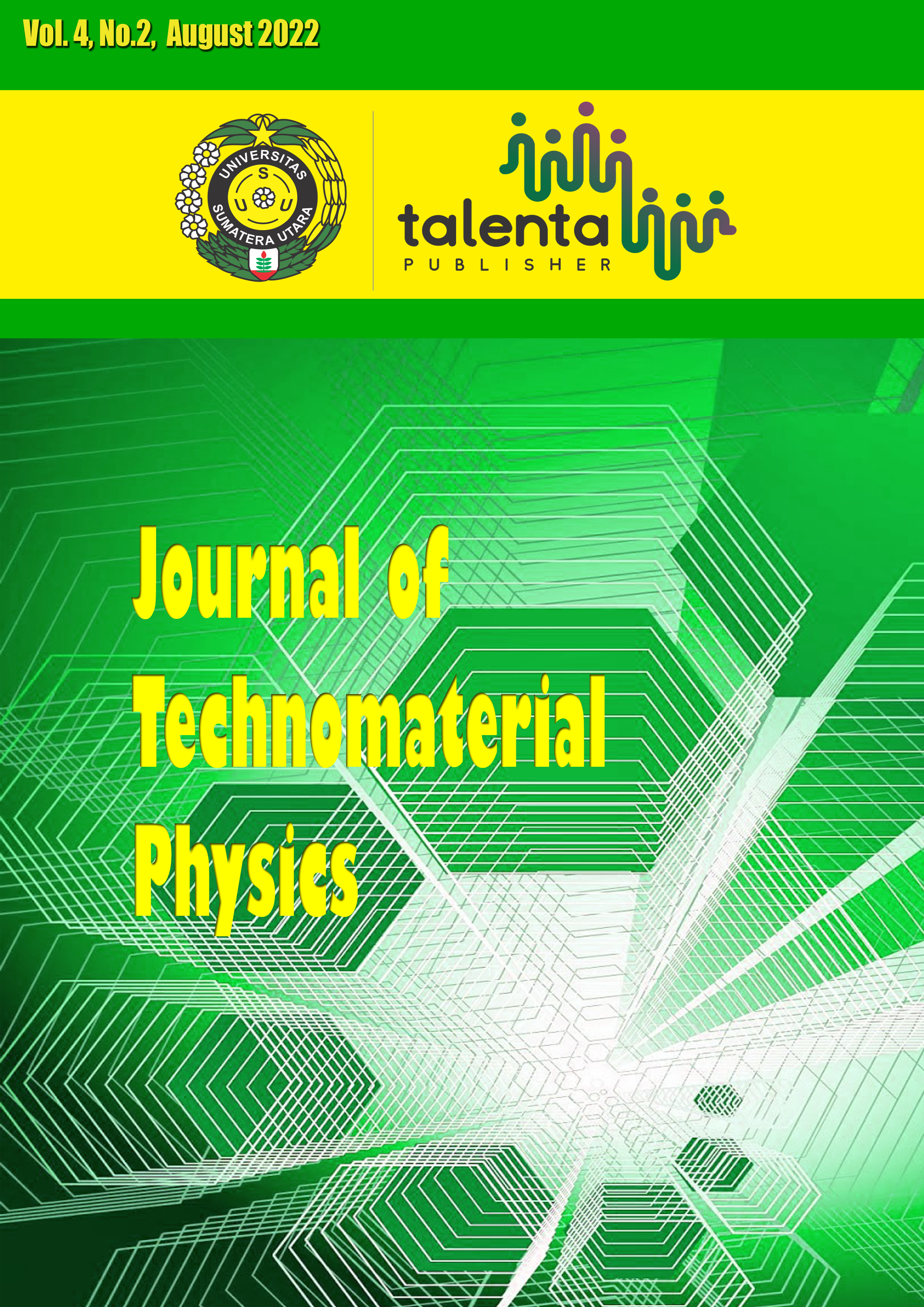The Synthesis and Characterization of Iron Sand-Based CuFe2O4 as Heavy Metal Ion Adsorbent
DOI:
https://doi.org/10.32734/jotp.v4i2.8023Keywords:
Adsorbent, CuFe2O4, Nanoparticles, Iron Sand, Spinel FerriteAbstract
This study aimed to synthesize iron sand-based Copper Ferrite (CuFe2O4) using the coprecipitation method. The iron sand was taken from South Cianjur and used as a Fe cation source to synthesize CuFe2O4 nanoparticles. Three composition variations of CuCl2.6H2O and iron sand (Fe3O4) were employed, i.e., 1:1, 1:2, and 2:1. Samples were characterized using X-Ray Diffraction (XRD), Scanning Electron Microscopy - Energy Dispersive X-Ray (SEM-EDX), and Atomic Adsorption Spectroscopy (AAS). The XRD analysis exhibits three synthesis-phase results: CuFe2O4, Fe2O3, and CuO. The produced CuFe2O4 has two crystal structures: t-CuFe2O4 in 1:2 variation and c-CuFe2O4 in variations 1:1 and 2:1. Adding Cu resulted in smaller crystal size and higher lattice parameters. SEM-EDX analysis of 1:2 sample variation showed a round-shaped particle of 102.57 nm. AAS analysis showed that the increased mole of Cu decreases the heavy metal, including Pb and Mn, adsorption capacity. The largest adsorption capacity was found in the 1:2 (60.698 mg/g).
Downloads
Downloads
Published
Issue
Section
License
Copyright (c) 2022 Journal of Technomaterial Physics

This work is licensed under a Creative Commons Attribution-ShareAlike 4.0 International License.








